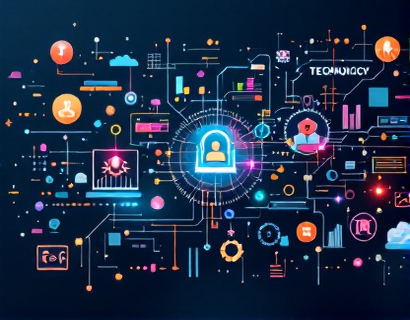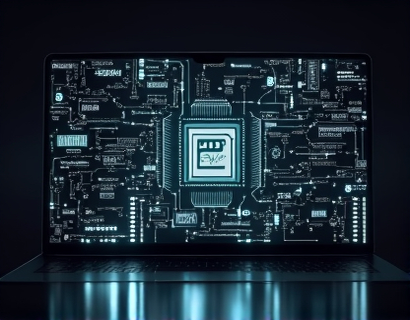Transforming Education with AI-Powered Chat Interfaces: Insights on Tokenization for All
In the rapidly evolving landscape of education, the integration of AI-powered chat interfaces represents a significant leap forward in how we access and understand complex topics such as tokenization. This technology not only simplifies intricate concepts but also makes them accessible and engaging for educators, students, and families alike. By leveraging advanced natural language processing and machine learning, these chat platforms provide verified insights and specialized knowledge, ensuring that users receive accurate and reliable information.
Understanding Tokenization: A Foundation for Educators
Tokenization, in the context of education and technology, refers to the process of breaking down information into smaller, manageable units or tokens. These tokens can represent words, phrases, or even more complex data structures, depending on the application. For educators, understanding tokenization is crucial as it forms the backbone of many educational technologies, including adaptive learning systems, natural language processing tools, and digital content management platforms.
Tokenization enables the creation of personalized learning experiences by analyzing and interpreting individual student interactions. By breaking down student performance data into tokens, educational software can identify patterns, strengths, and areas for improvement. This granular analysis allows educators to tailor their teaching methods and resources to better meet the needs of each student, fostering a more inclusive and effective learning environment.
Benefits for Students: Engaging with Tokenization
For students, the benefits of tokenization are manifold. By interacting with AI-powered chat interfaces, students can explore tokenization in a hands-on, interactive manner. These platforms can provide real-time feedback and explanations, making abstract concepts more concrete and understandable. For instance, a chat interface might break down a complex sentence into its constituent tokens, allowing students to see how each part contributes to the overall meaning.
Moreover, tokenization can enhance language learning by helping students grasp the structure and syntax of different languages. By tokenizing sentences and providing translations, students can better understand the nuances of language and improve their vocabulary and comprehension skills. This interactive approach not only makes learning more engaging but also more effective, as students can practice and reinforce their understanding through repeated interactions.
Family Engagement: Tokenization for Parents and Caregivers
Tokenization is not just beneficial for educators and students; it also plays a vital role in engaging families in the educational process. Parents and caregivers can use AI-powered chat interfaces to gain insights into their children's learning journeys. By tokenizing educational content and progress reports, these platforms can present information in a clear and digestible format, helping parents understand their child's strengths and areas for improvement.
For example, a chat interface might break down a child's performance in a reading comprehension exercise into tokens, highlighting specific words or phrases that the child found challenging. This detailed breakdown allows parents to support their child more effectively, providing targeted assistance and encouragement. Additionally, tokenization can facilitate communication between educators and parents, ensuring that everyone is on the same page regarding the child's educational progress.
Ensuring Safety and Accessibility: Child-Friendly Tokenization Insights
Recognizing the importance of safety and accessibility, especially for younger users, the development of child-friendly versions of these AI chat interfaces is essential. These versions are designed to provide accurate and age-appropriate information, ensuring that children can explore tokenization and related concepts in a secure and engaging environment.
Child-friendly interfaces use simplified language, visual aids, and interactive elements to make learning fun and accessible. For instance, a chat interface might use colorful graphics and simple explanations to introduce the concept of tokenization to elementary school students. These interfaces also include strict privacy controls and monitoring to protect children's data and ensure a safe online experience.
Content Verification: Building Trust in AI-Driven Education
One of the key advantages of using AI-powered chat interfaces for educational purposes is the emphasis on content verification. These platforms employ advanced algorithms and human oversight to ensure that the information provided is accurate, up-to-date, and relevant. This commitment to accuracy builds trust among users, whether they are educators, students, or parents.
Content verification involves cross-referencing information from multiple reliable sources, updating databases regularly, and incorporating feedback from subject matter experts. This multi-layered approach ensures that users receive the most current and authoritative insights on tokenization and related topics. For educators, this means they can confidently use the platform to enhance their teaching materials and stay informed about the latest developments in educational technology.
Future-Focused Insights: Staying Ahead in Tokenization Education
As the field of tokenization continues to evolve, staying informed about the latest trends and advancements is crucial. AI-powered chat interfaces provide future-focused insights by continuously updating their knowledge bases and incorporating new research and applications. This ensures that users have access to the most relevant and cutting-edge information.
For educators, this means they can integrate the latest tokenization techniques into their curricula, preparing students for future technological challenges. Students can explore emerging applications of tokenization in areas such as blockchain, digital identity, and smart contracts, fostering a deeper understanding of how these technologies can impact various industries. Families can also benefit from staying informed about these developments, enabling them to support their children's educational and career aspirations in a rapidly changing world.
Interactive Learning: Making Tokenization Accessible to All
The true power of AI-powered chat interfaces lies in their ability to make complex topics like tokenization accessible to a wide audience. By providing interactive and personalized learning experiences, these platforms cater to different learning styles and levels of expertise. Whether a user is a beginner or an advanced learner, the chat interface can adapt to their needs, offering tailored explanations and resources.
For instance, a beginner might start with basic definitions and examples of tokenization, while an advanced user could delve into more technical details and research papers. This flexibility ensures that all users, regardless of their background, can engage with the material in a way that is both meaningful and enjoyable. Interactive quizzes, simulations, and real-world scenarios further enhance the learning experience, making tokenization more tangible and relevant.
Conclusion: Embracing the Potential of AI in Education
In conclusion, AI-powered chat interfaces represent a transformative tool in the realm of education, particularly in the context of tokenization. By providing verified, accessible, and interactive insights, these platforms empower educators, students, and families to better understand and engage with this complex topic. The child-friendly versions ensure that even the youngest learners can benefit from these advancements, fostering a generation of tech-savvy and informed individuals.
As we continue to navigate the digital age, the integration of AI in education will only become more prevalent. Embracing these technologies not only enhances the learning experience but also prepares us for the challenges and opportunities of the future. By leveraging the power of AI, we can create a more inclusive, effective, and exciting educational landscape for all.










































